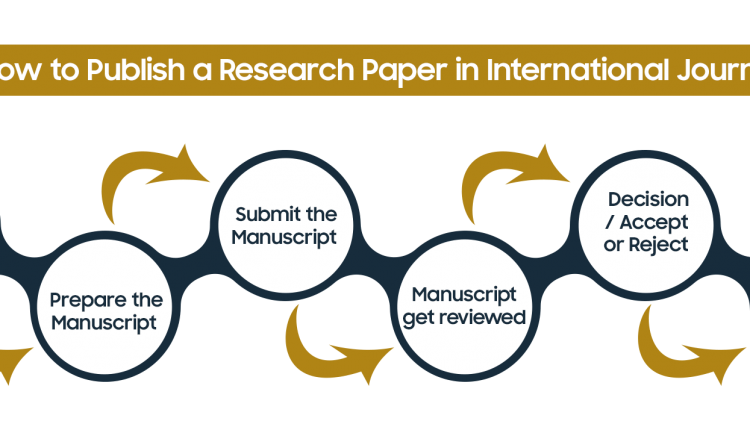How to Publish Your Paper in an Academic Journal?
Academic journals are a very convent way for authors to share their findings. Authors who aim to have an impact in their field of work resort to journals as it reaches more readers than any other publishing method. Academic journals aim to not only publish your work but to also be recognized and have a noticeable effect in the chosen field of study. This post aims to help academic authors through their publishing journey by providing some tips on how to get their work published in topnotch journals.
- Provide Interesting and Accurate Finding and Analysis
Dr Boué-Grabot, a professor in the Institut des maladies neurodégénératives (IMN) at the Université de Bordeaux said “The question should be clearly defined. The manuscript should progress logically and by the end, you should have told a story that hasn’t been told before.”
An important aspect of the manuscript is how the author is able to convey his thoughts. This puts pressure on the use of English language and the ability of the author to connect the flow of information and findings. Once the flow of ideas is coherent, authors need to check the accuracy and strength of their research outcomes.
- Write your Manuscript First Then Edit It Later
Once you have an outline of your manuscript, you need to start writing right away and think about the editing phase later. Dr Boué-Grabot advice authors to write without trying to edit their work first then work on perfecting the manuscript by editing it over and over again. Once you do this, it is recommended that you ask your colleagues for feedback, as it helps to notice if there is any drift in the stream of ideas. We understand that not all researchers are professional English writers, and for that, we advise you to get your paper checked by a professional English writer to avoid any inadequate transmission of the flow of ideas.
- Use Visual Aids to Support your Argument
They say a picture is worth a thousand words, for that it is very important to use visual aids to support your argument. This is because pictures and figures that contain strong, appropriate examples of your work, would make it easier for the reader to grasp the information presented.
- Pick a Journal
It might sound obvious that you should look for a journal that covers the discipline, but we cannot emphasize enough on the importance of this point. Once you find the right journal that covers your discipline, you have to make sure that you follow the aim, scope and submission criteria of the chosen journal. Your goal is to make sure that the editors like your manuscript and not complain about the paper’s quality of findings. You should also check the editorial board, a big indicator of the success of the journal in its field is the strength of the editors and editorial board.
Submitting the article to the journal:
https://www.youtube.com/watch?v=A8n6DCbyLvM
- Work on improving your manuscript using the review’s comments.
After your paper is submitted to the journal, it undergoes a review process from some of the finest professors and professionals in the field. For that, their comments and recommendations are very important pieces of information that should be followed. It is very important to address the revisions made carefully, this is done by following the comments received from reviewers and avoid diverting or ignoring them. Finally, it is very important to submit the revised manuscript before the deadline as some journals follow a multiple revision process policy.
To publish your research in the ESSD to be hosted on SSRN by ElSEVIER please follow the link below:
http://www.ierek.com/press/index.php/ESSD
Environmental Sciences and Sustainable Development (ESSD) is a multidisciplinary journal that is devoted to propagating peer-reviewed, original, high-quality academic research papers. ESSD is designed for the publication of selected papers from IEREK conferences proceedings and individual academic articles that fall within our scope.

See our previous issues on SSRN ELSEVIER’s website:
https://papers.ssrn.com/sol3/JELJOUR_Results.cfm?form_name=journalbrowse&journal_id=2977643
Finally, a General Advice: Read, read and finally read.
Dr Fabrizio Sitzia, one of Scientific’s product specialists, said: “You don’t just need to read so that you know as much as possible about what is going on in your field. You also need to read to get an idea of how a research paper is put together. The greater the variety and number of examples you see the better you will become at writing papers yourself.” The idea is to expand your scientific writing skills through reviewing a number of papers under different fields and see how authors are able to convey their line of thought.
To learn more about the topic, IEREK is presenting a two-day workshop were a team of professionals, from Springer; a top tear publishing company that publishes books, e-books and peer-reviewed journal articles in science, technology, and medicine, will walk you through the steps and procedures needed to publish your work.
During the workshop, professionals are going to teach current and future scholars, who wish to publish their work, the steps and procedures they should go through to choose, finance, and finally publish their work.
Please follow the link to learn more about the authors’ workshops:
https://www.ierek.com/study_abroad_categories#Winter-Schools
Keywords:
- ACADEMIC WRITING
- AUTHORS
- RESEARCH PAPER
- RESEARCHERS
- SCIENTIFIC WRITING
- SPRINGER
- SCIENTIFIC JOURNALS
- SSRN
- PUBLISHING
- JOURNAL
- MANUSCRIPT
- paper publishing
- how to publish a research paper
- scientific journal articles
- how to get published
- journal publishers
- getting published
- how to publish a paper
- how to get an article published
- how to publish


